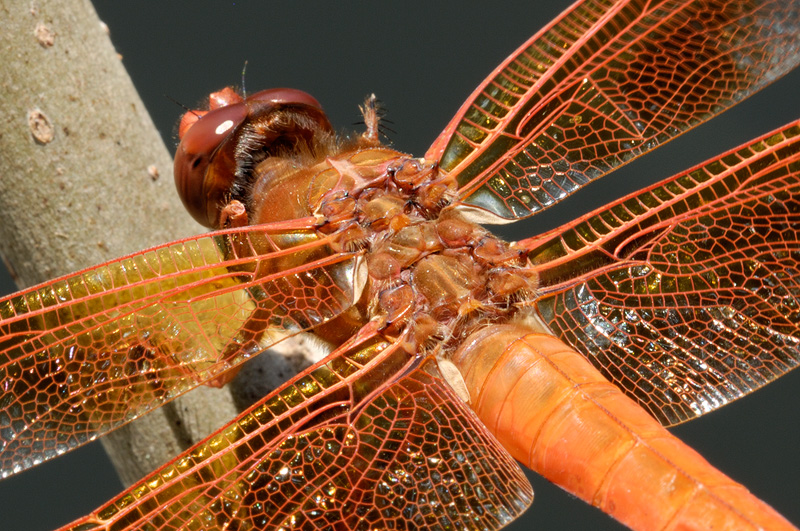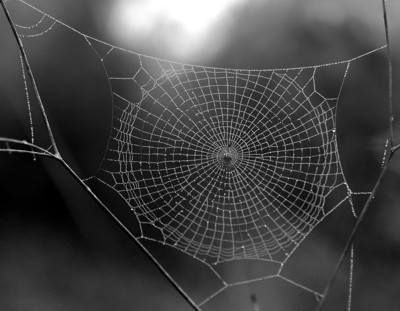
Posted on 09/13/2013 10:22:08 AM PDT by Red Badger
A plant-hopping insect found in gardens across Europe - has hind-leg joints with curved cog-like strips of opposing 'teeth' that intermesh, rotating like mechanical gears to synchronise the animal's legs when it launches into a jump.

This image shows cog wheels connecting the hind legs of the plant hopper, Issus. Credit: Burrows/Sutton

Photograph of an Issus nymph. Credit: Malcolm Burrows
The finding demonstrates that gear mechanisms previously thought to be solely man-made have an evolutionary precedent. Scientists say this is the "first observation of mechanical gearing in a biological structure".
Through a combination of anatomical analysis and high-speed video capture of normal Issus movements, scientists from the University of Cambridge have been able to reveal these functioning natural gears for the first time. The findings are reported in the latest issue of the journal Science.
The gears in the Issus hind-leg bear remarkable engineering resemblance to those found on every bicycle and inside every car gear-box.
Each gear tooth has a rounded corner at the point it connects to the gear strip; a feature identical to man-made gears such as bike gears – essentially a shock-absorbing mechanism to stop teeth from shearing off.
The gear teeth on the opposing hind-legs lock together like those in a car gear-box, ensuring almost complete synchronicity in leg movement - the legs always move within 30 'microseconds' of each other, with one microsecond equal to a millionth of a second.
This is critical for the powerful jumps that are this insect's primary mode of transport, as even miniscule discrepancies in synchronisation between the velocities of its legs at the point of propulsion would result in "yaw rotation" - causing the Issus to spin hopelessly out of control.
"This precise synchronisation would be impossible to achieve through a nervous system, as neural impulses would take far too long for the extraordinarily tight coordination required," said lead author Professor Malcolm Burrows, from Cambridge's Department of Zoology.
"By developing mechanical gears, the Issus can just send nerve signals to its muscles to produce roughly the same amount of force - then if one leg starts to propel the jump the gears will interlock, creating absolute synchronicity.
"In Issus, the skeleton is used to solve a complex problem that the brain and nervous system can't," said Burrows. "This emphasises the importance of considering the properties of the skeleton in how movement is produced."
"We usually think of gears as something that we see in human designed machinery, but we've found that that is only because we didn't look hard enough," added co-author Gregory Sutton, now at the University of Bristol.
"These gears are not designed; they are evolved - representing high speed and precision machinery evolved for synchronisation in the animal world."
Interestingly, the mechanistic gears are only found in the insect's juvenile – or 'nymph' – stages, and are lost in the final transition to adulthood. These transitions, called 'molts', are when animals cast off rigid skin at key points in their development in order to grow.
It's not yet known why the Issus loses its hind-leg gears on reaching adulthood. The scientists point out that a problem with any gear system is that if one tooth on the gear breaks, the effectiveness of the whole mechanism is damaged. While gear-teeth breakage in nymphs could be repaired in the next molt, any damage in adulthood remains permanent.
It may also be down to the larger size of adults and consequently their 'trochantera' - the insect equivalent of the femur or thigh bones. The bigger adult trochantera might allow them to can create enough friction to power the enormous leaps from leaf to leaf without the need for intermeshing gear teeth to drive it, say the scientists.
Each gear strip in the juvenile Issus was around 400 micrometres long and had between 10 to 12 teeth, with both sides of the gear in each leg containing the same number – giving a gearing ratio of 1:1.
Unlike man-made gears, each gear tooth is asymmetrical and curved towards the point where the cogs interlock – as man-made gears need a symmetric shape to work in both rotational directions, whereas the Issus gears are only powering one way to launch the animal forward.
While there are examples of apparently ornamental cogs in the animal kingdom - such as on the shell of the cog wheel turtle or the back of the wheel bug - gears with a functional role either remain elusive or have been rendered defunct by evolution.
The Issus is the first example of a natural cog mechanism with an observable function, say the scientists.
It says...Made in China


I love it! The more science tries to disprove God, the more we see His hand in everything. I love it!
I have a degree in mechanical engineering. The best minds in the world can't create a machine this complex. But there is more.
When people compare the mature dragonfly to a flying robot, they fail to consider the fact that the dragonfly developed from a microscopic size, to its mature size, requiring only minimal organic inputs. Try to imagine developing a robot like that. And yet this creature is supposed to have developed by chance. What could be more absurd?

One could almost envision the blueprints and construction drawings for that creature. The uniformity and precision of honeycombs in the bee world is pretty fascinating, also.
If by “intelligent design” you mean God set up a universe in which a mechanism like that could evolve, then the answer is yes.
I think spider webs are amazing.
“...they fail to consider the fact that the dragonfly developed from a microscopic size, to its mature size, requiring only minimal organic inputs.”
Do you mean from the egg to the larval form to the mature adult? Or from the beginning of time?
http://en.wikipedia.org/wiki/Meganeura

..and to spider webs!:

I've always wondered, "How does the spider automatically know how to do that??"
The curled tails in dogs is a result of selective breeding by man. This feature is not found in wolves, foxes and other canine type species. The domestication and breeding of foxes in Siberia for the fur industry has show similar trends in the later generations of foxes, just like dogs. The genes are apparently there, but not expressed in the wild............

Perhaps pack dogs don’t need curly tails because they have each other to keep warm, whereas the solitary dogs (pets) need them. Give me a gold star for trying? LOL
All they need to do is make this statement and the notion that God designed it is disallowed! No proof required. Ain't it wonderful how science works?
I watched a program once where the people in a village wore human face masks on the backs of their heads to reduce tiger attacks. Two can play at that game. LOL
Dogs, all dogs, are essentially wolves. They have done DNA studies and found that wolf DNA is indistinguishable form that of a Chihuahua. Dogs and wolves can mate and produce viable offspring that is not sterile like a mule or other hybridized type of animal.
My Chihuahua still thinks she is a wolf..............
Our wolf-like dog thinks our Chihuahua is a wolf.
So, I'd like to see millions of years worth of fossils as non-functioning "near gears" developed.
Disclaimer: Opinions posted on Free Republic are those of the individual posters and do not necessarily represent the opinion of Free Republic or its management. All materials posted herein are protected by copyright law and the exemption for fair use of copyrighted works.